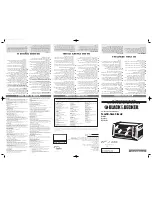
88
CASCADE CONNECTION
4.3
Setting the main parameters
Some parameters are essential in order for the system to operate
in cascade and setting these parameters is a determining factor
for correct system operation.
9
The parameters described below must only be set on the
Managing module.
4.3.1
Par. 73 – Managing, Stand-alone mode
Parameter 73 defines how the thermal module is addressed and
serves to ensure that the signal from the secondary sensor is
recognised.
You can set two values:
−
Managing:
to be set on the Managing module so that
secondary sensor operation is activated.
NOTE: The secondary SC probe must be connected to the 13
terminals and 14 of the MO1 terminal block of the managing
module;
−
Stand Alone:
to be set on the Managing module so that
secondary sensor operation is deactivated;
Boiler Cascade
Settings
(73) Stand
Alone Boiler
Boiler Settings
Settings
Home/Menu
screen
4.3.2
Par.147 – No. thermal modules
Parameter 147 defines the number of thermal modules in the
system (it is important to set the numer of connected modules
for the system to work properly). This parameter must only be
set on the "Managing" module.
Cascade
Module Config.
(147) Number
of Units
Boiler Settings
Settings
Home/Menu
screen
4.3.3
General operation
With cascade operation, the regulator of the managing mod-
ule establishes a setpoint to be sent to the depending modules
based on the parameters 86-87, the difference between the
setpoint value set and the value read on the primary delivery
manifold (or on the basis of par 176-177 and the difference be-
tween the setpoint value set and the value read on the second-
ary delivery manifold).
On the basis of the setpoint received from the Managing mod-
ule, each module modulates based on its own PID (Par 16, Par 17
and Par 18) as a function of the difference between the setpoint
(sent by the Managing module) and the value read by the deliv-
ery sensor on the module itself.
9
The PID is a Proportional-Integral-Derivative control system
(abbreviated to PID) with retro-action. By reading an input
value which determines the current value, it is able to re-
act in the event of a positive or negative error (difference
between the current value and the target value), tending
towards 0. Reaction to the error can be regulated through
the terms "proportional, integral, derivative".
4.4
Operation with the primary sensor
The system sensor present on the primary system (see block di-
agrams 1 and 3) allows the setpoint sent to the individual mod-
ules to be modulated on the basis of the difference between
the setpoint and the value read on the delivery manifold of the
primary system.
The following parameters regulate this modulation:
79
defines the maximum setpoint decrease
80
defines the maximum setpoint increase
81
defines the time (from the start of the request) from
which the setpoint modulation is started
86
proportional parameter for setpoint modulation
87
integrative parameter for setpoint modulation
4.5
Operation with the secondary sensor
When the secondary system is present (see block diagrams 2 and
4), the setpoint sent to the individual modules to be modulat-
ed on the basis of the difference between the setpoint and the
value read on the delivery manifold of the secondary system.
In the same way that modulation is based on the system sensor,
the following parameters intervene:
169
defines the maximum setpoint decrease
170
defines the maximum setpoint increase
171
defines the time (from the start of the request) from
which the setpoint modulation is started
176
defines the proportional term for setpoint modulation
177
defines the integrative term for setpoint modulation
4.6
Parameter 148: operating mode of the
cascade
It is possible to adopt cascade management which can be mod-
ified according to different strategies. These different strategies
can be set using the parameter known as "Cascade mode" Par.
148.
4.6.1
Par 148 = 0
The start-up/shutdown law of each module is based on the fol-
lowing graph.
The shut-off values of the lines with the y axis are the sum or
the difference of the values of the corresponding parameter in
relation to the value of the setpoint sent by the Manging module
to the modules.
Setp + Par 146
Clear Demand
(no time)
Remove Depending faster
Time = Par 143
Remove depending
Time = Par 76
Power Balance
Add Depending
Time = Par 75
Add Depending faster
Time = Par 142
Setp + Par 145
Setp - Par 144
Setp + Par 78
Setpoint
Setp - Par 77
-1
-1
-1
+1
-1
+1
-1
+1
-1
+1
-1
-1
-1
+1
-1
+1
-1
+1
-1
+1
-1
-1
-1
+1
-1
+1
-1
+1
-1
+1
-1
+1
-1
+1
-1
+1
-1
-1
-1
+1
















































